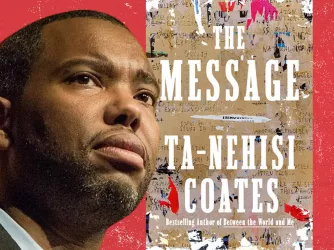Table of Contents
Chinatown protest in Philadelphia: Using free speech to defend a ‘beloved community’
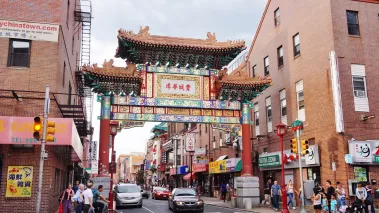
EQRoy / Shutterstock.com
The landmark Friendship Gate in the Chinatown neighborhood in downtown Philadelphia at 10th and Arch streets.
Justin Crosby is a rising junior at Yale University and a FIRE summer intern.
Philadelphia’s Chinatown community is in the midst of a public relations battle against the Philadelphia 76ers professional basketball team. It has been nearly a year since the team’s urban development corporation, 76 Devcorp, proposed building an arena next to the historic neighborhood, and tensions remain high.
The 76ers argue their private investment would serve as an economic boon to an area that some local leaders refer to as Market Street’s “dead zone.” Opponents believe that the stadium would have a gentrifying effect and place needless stress on the neighborhood. Living in Chinatown this summer and getting to know the community, I must admit that I am inclined to agree with the opponents.
Months of community frustration culminated in a June 10 march to City Hall. Residents, civic groups, and allies utilized their freedom to peaceably assemble by taking to the streets to express their opposition to the stadium. One chant reverberated among the crowd: “This is what democracy looks like.”
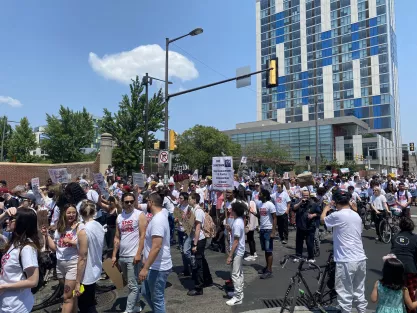
Posters lining Chinatown’s sidewalks asked onlookers to help “protect our beloved community.”
This phrase alludes to the historically rich concept of the “beloved community.” Originating in the 1910s, it was reintroduced in the 1960s by civil rights leader Howard Thurman. He argued that healthy relations and authentic integration in a desegregated society require a beloved community, which is one rich with love and “natural communal association.” For this reason, the beloved community served as the backbone of Dr. Martin Luther King Jr.’s philosophy. To this day, it challenges us to imagine — and perhaps even build — the ideal dynamics of the communities we inhabit.
Recent political tides have sought to remove controversial ideas from public discourse rather than allow individuals to discuss and confront them directly.
What makes a community beloved? In one word — empathy. Thurman and King envision a collection of individuals immersed in reciprocal empathy, unconstrained by artificial barriers of discrimination, and skeptical of conformity. The strong interpersonal relationships thus made possible are fortified by a cautious allegiance to local institutions and norms, which allows for enduring trust, coexistence, and justice.
No community is without disagreement, and the beloved community embraces that, seeing diversity of opinion as a strength. It is uniquely well situated to welcome dynamic and spirited conversations, as widespread empathy enables productive discourse that seeks out and respects differing perspectives.
As a newcomer who is unacquainted with the nuances of Chinatown, I cannot offer personal testimony to the nature of its community, but as the posters and protest suggest, quite a few locals believe their community to be a beloved one. As those locals would likely attest to, beloved communities invariably face forces that originate within and without, ranging from groupthink to physical relocation. In our Constitution, however, we find an invaluable tool for self-defense against these forces: the First Amendment.
Our democratic tradition, which places great emphasis on the wisdom and wishes of the people, is bolstered by the rich and free dialogue that originates in beloved communities. The only way to ensure that tradeoffs are understood and weighed by the broader electorate is through communicating arguments, voices, and stories, be it through conversation or intensive advocacy. This worked for Chinatown in 2000, when locals successfully advocated against the construction of a ballpark for the Philadelphia Phillies, but did not work so well in 2011 against the expansion of the Pennsylvania Convention Center.
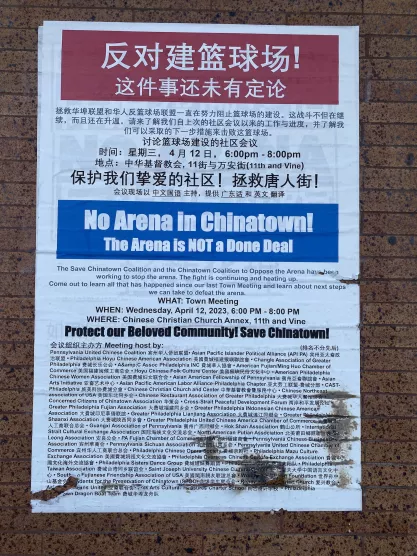
When a community is confronted by contentious change, as is the case in Chinatown, or faces challenges from within, the First Amendment allows for the first necessary precondition of redress: the sharing of an unpopular opinion. From there, members of the community can engage in dialogue and enact reform to confront challenges, so that the beloved community can grow closer to its ideal. Such dialogue between diverse perspectives, which in practice occurs across the nation, is integral to maintaining both beloved communities and the prudent electorate that our democracy requires to function.
It’s true that the First Amendment also allows hateful ideas to be shared within a community, which may shock some or create discomfort. However, concealing hatred merely allows it to flourish below the surface. Stewards of the beloved community understand that only through humanizing those who dehumanize can impulses of animosity be replaced by bonds of love and a culture of tolerance. When we are welcomed in a community, and can see the consequences of our conduct and speech, we are more likely to have empathy, which causes us to be civil in our conduct and moderate in our speech.
The mere existence of free speech and other First Amendment liberties do not guarantee the existence of empathy or the beloved community, but they do play a critical role in the creation of both. The precursor to empathy is expression; understanding others requires the sharing of opinions, experiences, and thoughts. As a community engages with its members' contrasting ideas and consequently builds mutual empathy over time, it develops the institutions and norms of constructive dialogue that are crucial to making the community beloved.
Proposed developments like sporting arenas or stadiums often lead to animated, but short-lived, discourse on the status and meaning of community. But we cannot forget the more far-reaching and enduring trends that impact both our communities and the First Amendment. The digital age has given us the illusion of community while keeping us isolated from each other, allowing us to avoid the messy bonds and obligations that are core to a true and fulfilling membership. And recent political tides have sought to remove controversial ideas from public discourse rather than allow individuals to discuss and confront them directly. Both of these stubborn forces hollow our discourse and empathy, thus hindering us from building an authentic understanding of our neighbors.
Stories like Chinatown’s bring soul and complexity to the First Amendment, reminding us of how inextricably linked our beloved communities’ welfare is to our democracy and the freedoms it grants us, especially freedom of speech. In light of ongoing developments, we must build coalitions that leverage the mutually beneficial relationship between our communities, the First Amendment, and our democracy in efforts to defend them. If we fail to, the death of one may mean the death of all three.
Recent Articles
FIRE’s award-winning Newsdesk covers the free speech news you need to stay informed.

How to survive Thanksgiving
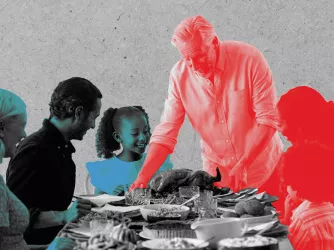
Right, left, and in-between: Can we bring our differences to the table?
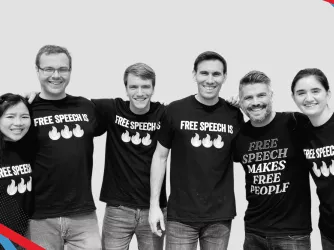
FIRE is the proud home for those who defend free speech
